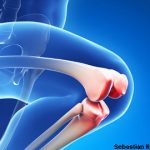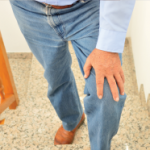According to new research, knee OA patients reported greater pain relief from intra-articular corticosteroids, but naproxen was more effective at improving function…


According to new research, knee OA patients reported greater pain relief from intra-articular corticosteroids, but naproxen was more effective at improving function…

A systemic review supports the ideas that exercise benefits the physical and mental health of patients experiencing pain related to hip and/or knee osteoarthritis (OA). Overall, research indicates that patients who exercised had slightly lower rates of pain and greater physical function, as well as slightly improved self-efficacy and social function…

After an independent review, ongoing clinical trials investigating the safety of fasinumab for treating hip or knee OA will discontinue the use of higher fasinumab doses…
Megan Brooks |
NEW YORK (Reuters Health)—Patients undergoing total joint replacement are younger now than they were in 2000, new research indicates. The average patient undergoing a total hip replacement (THR) in 2014 was 64.9 years, while the average patient in 2000 was 66.3 years. Similarly, the average patient undergoing a total knee replacement (TKR) was 65.9 in…

Nan Yang, PharmD, & Kurt Oelke, MD, on behalf of the ARHP Practice Committee |
Two decades have passed since the first biologic disease-modifying anti-rheumatic drug (bDMARD) was approved. Studies on the long-term use of biologics in different disease states, such as for cardiovascular disease (CVD) and malignancy, as well as for knee/hip replacement, reveal some encouraging news. In clinical trials, bDMARDs have been shown to increase the risk of…
Lisa Rapaport |
(Reuters Health)—Patients with knee osteoarthritis (OA) and insomnia may be less troubled by joint pain after they get treatment to help them sleep better, a recent study suggests. Knee OA, a leading cause of pain and disability in older adults, occurs when flexible tissue at the ends of bones wears down. Although it can’t be…
Arthritis Care & Research |
A new tool for assessing the risk of developing knee osteoarthritis (OA) may be useful for knee OA education. A recent study found the online risk calculator, OA Risk C, was effective in helping patients better understand their personal risk of developing the disease. It may also motivate some patients to embrace exercise-related behavior changes…
A new guideline developed by the ACR and the American Association of Hip and Knee Surgeons addresses the perioperative use of antirheumatic drug therapy. Specifically, it provides recommendations on the use of traditional disease-modifying antirheumatic drugs, biologic agents, tofacitinib and glucocorticoids in adults with RA; SpA, including ankylosing spondylitis and psoriatic arthritis; JIA; or SLE undergoing elective THA or TKA. The guideline provides recommendations regarding when to continue, when to withhold and when to restart these medications, and the optimal perioperative dosing of glucocorticoids…

An international task force convened by the European Society for Clinical and Economic Aspects of Osteoporosis and Osteoarthritis (ESCEO) recommends systematic repeated intra-articular hyaluronic acid (HA) injections as second-line treatment for patients with knee osteoarthritis (OA). This is the first time a group of experts has made this recommendation, which is directed toward treatment of…

Collaboration among all providers—surgeon, rheumatologist, physical therapist, etc.—is essential for patients with a rheumatic disease who are about to undergo total joint arthroplasty to reach their goals, including reduced pain and improved mobility…